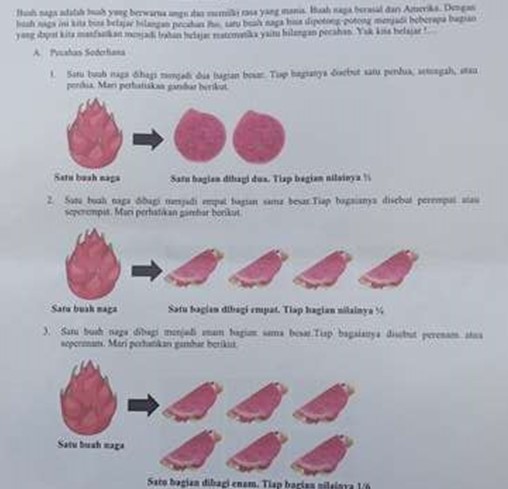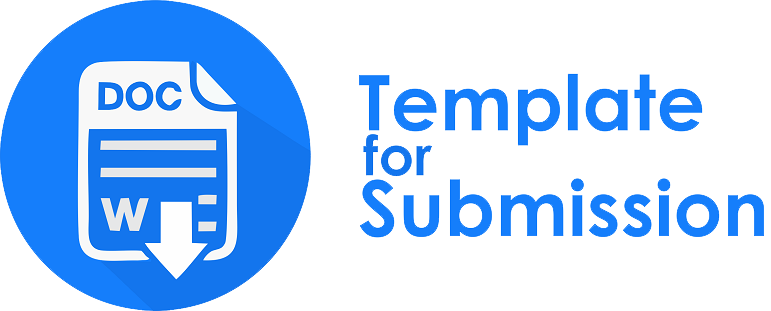FRACTION LEARNING USING DAILY CONTEXT FOR PRE-SERVICE PRIMARY SCHOOL TEACHER EDUCATION
Abstract
Fractions are important material to understand because fractions are often encountered in everyday life. This research aims to analyze the fraction learning process using the PMRI approach for pre-service primary school teachers. This type of research is descriptive qualitative research with a PMRI approach using the context of everyday life. The subjects of this research were 20 students at second semester. Data collection techniques included tests, documentation and observation. The data analysis technique uses the Miles and Huberman model. The results of this research are a description of the thinking framework of pre-service primary school teachers using daily life contexts in the form of objects and food in determining the concept of fractions. Students are able to implement the concept of fractions using the PMRI approach through the use of the context of objects and food that exist in everyday life. It is that this research will become a guide in learning fractions and can be developed into student worksheets
Downloads
References
Agustyarini, Y. (2021). The Effectiveness of the PMRI Approach on the Learning Outcomes of Grade IV Students on Equivalent Fractions at MIS Setia Bhakti Trawas. Chalim Journal of Teaching and Learning, 1(1), 1-5. https://doi.org/10.31538
Alqahtani, M., Powell, A., Webster, V., & Tirnovan, D. (2022). How a measuring perspective influences pre-service teachers’ reasoning about fractions with discrete and continuous models. International Electronic Journal of Elementary Education, 14(3), 441-458.
Anggraini, L., Nurtamam, M. E., & Mujtahidin. (2016). The Effectiveness of Mathematics Learning Based on Multiple Intelligences Assisted by Bonsangkar Media on Student Learning Outcomes on Fraction Calculation Operations Material. Proceedings of the National Seminar on Mathematics and Learning.
Baharuddin, M. R., Sukmawati, S., & Christy, C. (2021). Description of Students' Numeracy Ability in Solving Fraction Operations. Pedagogy, 6(2), 90-101, https://doi.org/10.30605/pedagogy.v6i2.1607.
Braithwaite, D. W., & Siegler, R. S. (2020). Putting Fractions Together. Journal of Educational Psychology, 113(3), 556-571.
Chityadewi, K. (2019). Improving Mathematics Learning Outcomes on Fraction Addition Calculation Operations with the CTL (Contextual Teaching and Learning) Approach. Journal of Education Technology, 3(3), 196-202.
Haniek, S. P., & Rianasari, V. F. Development of Prototype Fraction Addition Learning Tool with PMRI Approach in Class IV. Derivat Journal, 2(2), 85-94.
Kania, N. (2018). Props to Understand the Concept of Fractions. Teorems (The Original Research of Mathematics), 2(2), 1-12.
Karika, T., & Csiko, C. (2022). A Test for Understanding Simple Fractions Among 5th Grade Students at the Beginning of Lower Secondary Education. Eurasia: Journal of Mathematics, Science, and Technology Education, 18(2), 1-14.
Lisnani. (2019). Elementary School Teacher Candidates' Initial Conceptual Understanding of Fractions. Mosharafa: Journal of Mathematics Education, 8(1), 61-70.
Marhamah, Zulkardi, & Aisyah, N. (2011). Development of Fraction Teaching Materials with PMRI Approach in SD Negeri 21 Palembang. Journal of Mathematics Education, 5(2), 171-184.
Miles, M.B, Huberman, A.M, & Saldana, J. (2014). Qualitative Data Analysis, A Methods Sourcebook, Edition 3. USA: Sage Publications. Terjemahan Tjetjep Rohindi Rohidi, UI-Press.
Murtiyasa, B., & Wulandari, V. (2020). Analysis of Student Errors in Fractional Numbers Based on Newman's Theory. Axiom: Journal of Mathematics Education Study Program, 9(3), 713-726. https://doi.org/10.24127/ajpm.v9i3.27.
Novita, R., Herman, T., Dasari, D., & Putra, M. (2022). Analyzing Second-Year University Students' Rational Number Understanding: A Case on Interpreting & Representing Fraction. European Journal of Educational Research, 11(3), 1747- 1762. https://doi.org/10.12973/eu-jer.11.3.1747.
Oktaviani, D. R., Ningrum, N. D., Utami, I. S. (2023). Efforts to Improve Mathematics Learning Outcomes on Fraction Materials through the PMRI Learning Model for Class IIIB Students of Banjarbendo Elementary School. Journal of Research Innovation, 4(2), 433-438.
Pangaribuan, F., Sinaga, J. A., & Herman. (2021). Design of student activity sheets (las) to improve students' ability to understand the concept of division of fractions at SD Negeri 095173 Sihemun. Jubaedah: Journal of School Service and Education, 1(1), 69-76. https: ://doi.org/10.46306/jub.v1i1.15.
Perry, C. J. (2023). Elementary Preservice Mathematics Teachers Fraction Knowledge: An Integrative Review of Research. Educational Considerations, 49(1). https://doi.org/10.4148/0146-9282.2346.
Pujiningtias, E. N., Saputra, H. J., & Muhajir, M. (2021). Development of Majamat Media on Fraction Materials in Mathematics Subjects. Journal of Educational Research and Development, 3 (3), 257-263. https://doi.org/10.23887/jppp.v3i3.19261.
Putra, G. Y. M. A., Suarjana, I. M., & Agustiana, I. G. A. T. (2021). E-LKPD on Fraction Materials in Learning at Elementary School. Mimbar PGSD Undiksha, 9(2), 220-228.
Resnick, I., Newcombe, N., & Goldwater, M. (2023). Reasoning About Fraction and Decimal Magnitudes, Reasoning Proportionally, and Mathematics Achievement in Australia and the United States. Journal of Numerical Cognition, 9(1), 222-239. https://doi.org/10.5964/jnc.8249
Suciati, I. (2020). The Use of the "Mental Math War" Method by Using Fraction Card Media on Fractional Numbers Addition Material. Guru Tua: journal of Education and Learning, 3(1), 35-42.
Tastepe, M. (2023). Examination of Pre-Service Teachers' Perceptions of the Concept of Fraction Using the Word Association Test. Asian Journal of Education and Training, 9(1), 15-22.
Wardana, M. Y. S., & Damayanti, A. T. (2017). Students' Perception of Fraction Learning in Elementary School. Mosharafa: Journal of Mathematics Education, 6(3), 451-462 .

Copyright (c) 2023 Lisnani Lisnani

This work is licensed under a Creative Commons Attribution-NonCommercial-ShareAlike 4.0 International License.
License and Copyright Agreement
By submitting a manuscript to Jurnal Pendidikan Matematika (JUPITEK), the author(s) certify and agree to the following terms:
- Originality and Authority: The submitting author is authorized by all co-authors to enter into this agreement. The manuscript describes original work that has not been published previously in a peer-reviewed journal, nor is it under consideration for publication elsewhere.
- Approval: Its publication has been approved by all author(s) and by the responsible authorities of the institutions where the work was carried out.
- Rights: The authors secure the right to reproduce any material that has already been published or copyrighted elsewhere.
- Licensing and Copyright: Authors retain the copyright to their work.
- License Grant: The authors grant Jurnal Pendidikan Matematika (JUPITEK) the right of first publication, with the work simultaneously licensed under the Creative Commons Attribution-NonCommercial-ShareAlike 4.0 International (CC BY-NC-SA 4.0).
- Self-Archiving: Authors are permitted and encouraged to deposit the published version of their article in institutional repositories, on their personal websites, and other academic platforms, with proper acknowledgment of its initial publication in Jurnal Pendidikan Matematika (JUPITEK).





.png)


